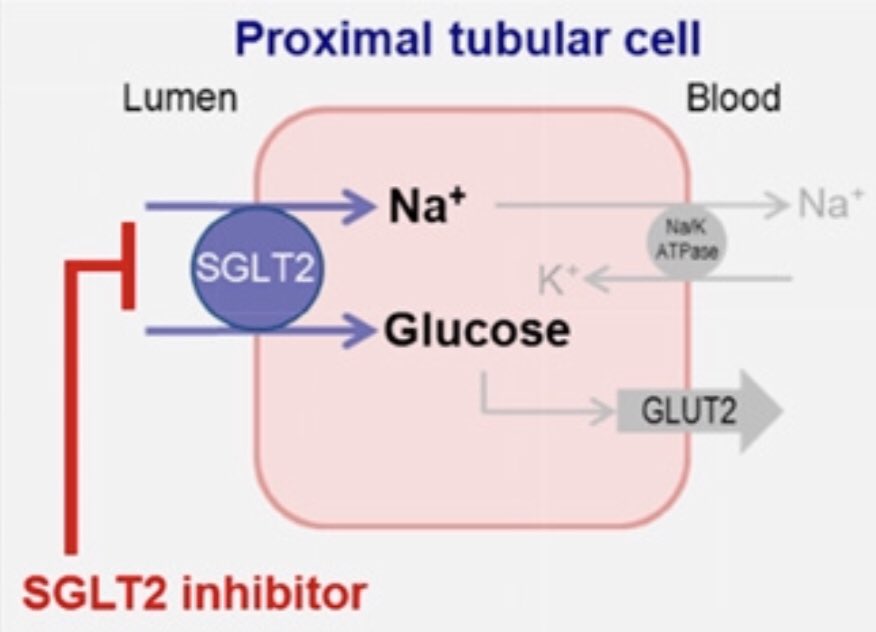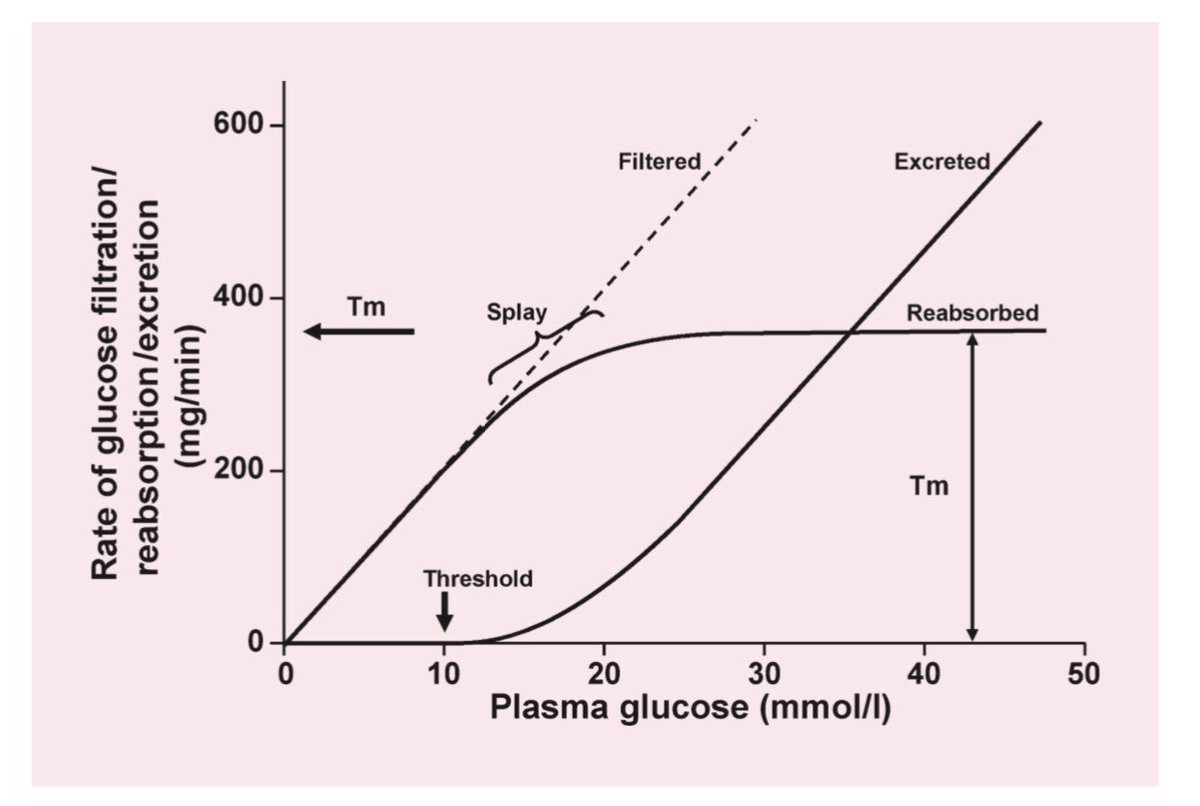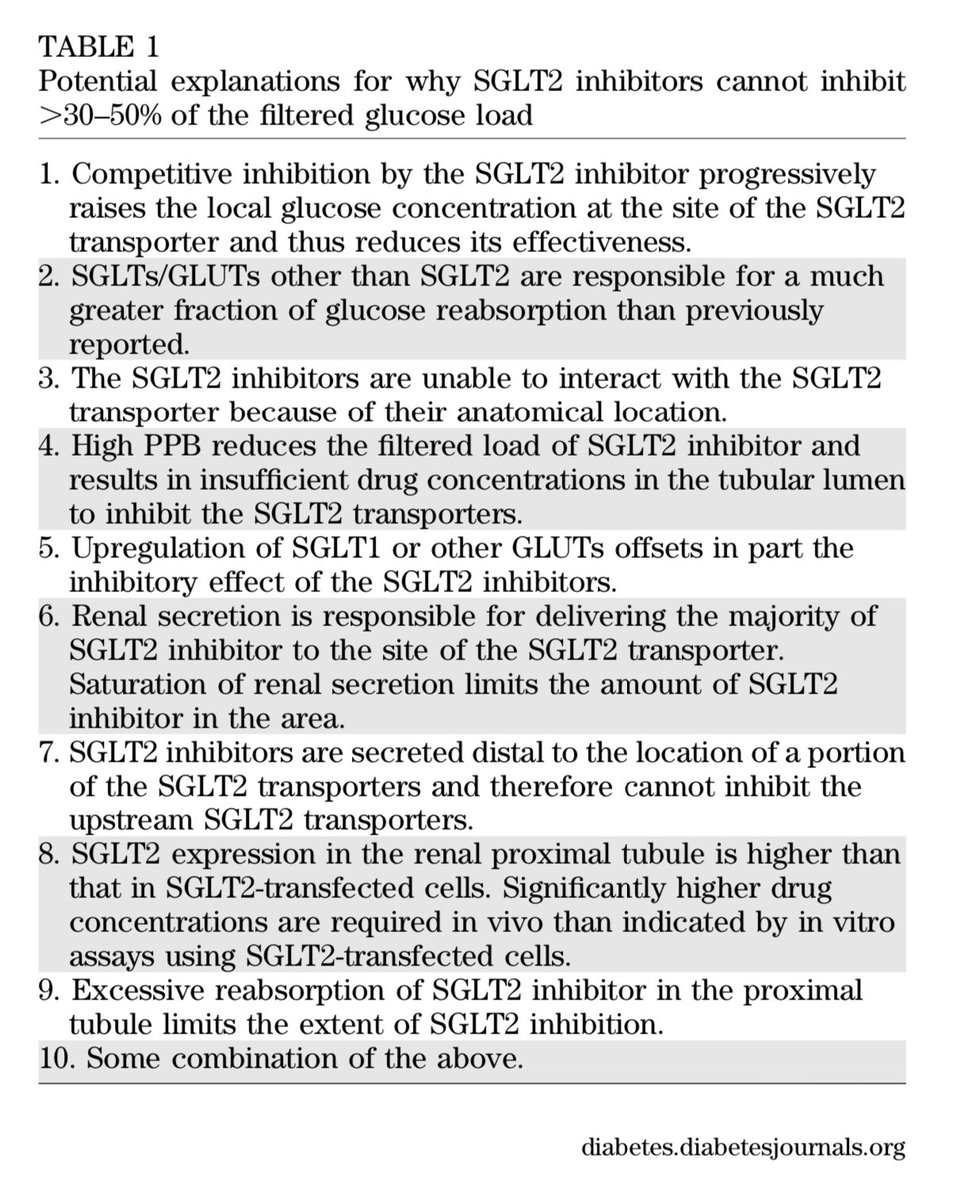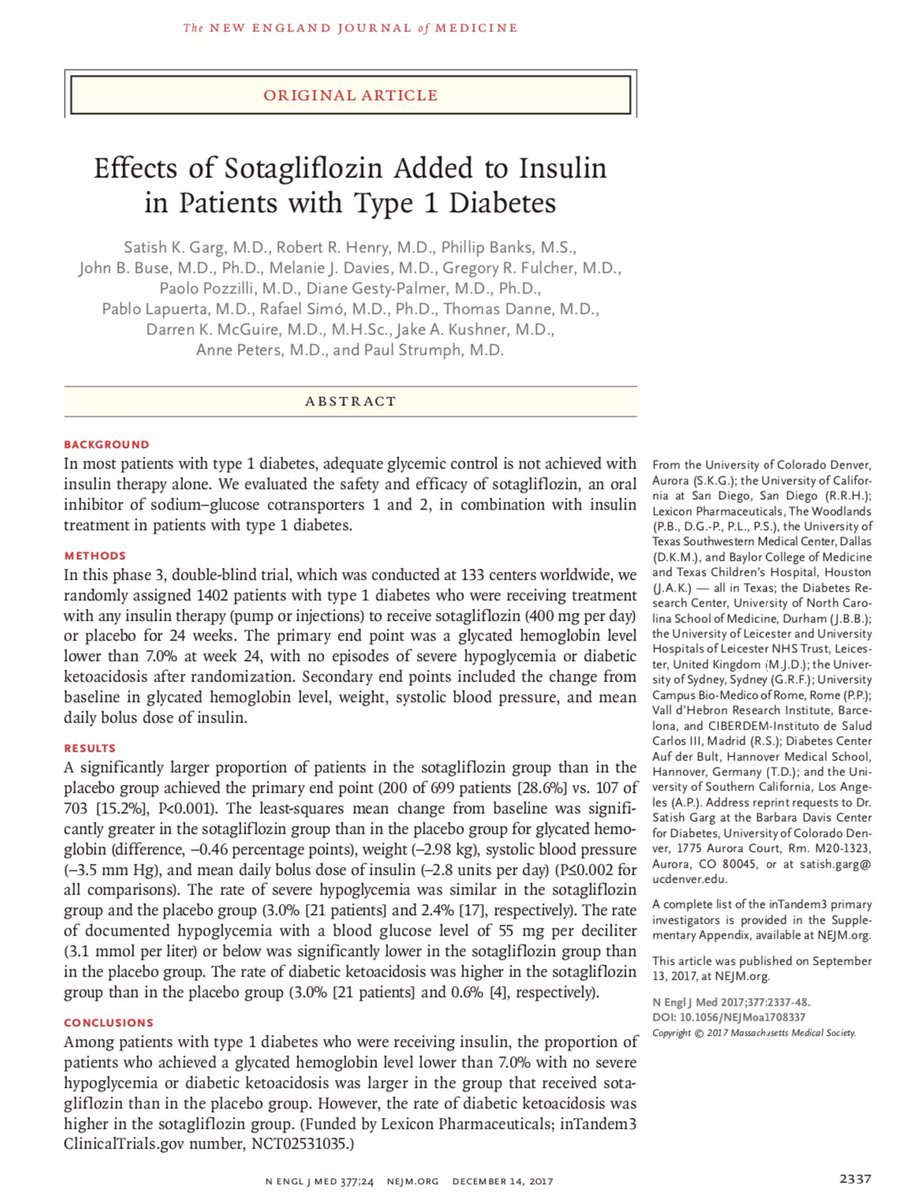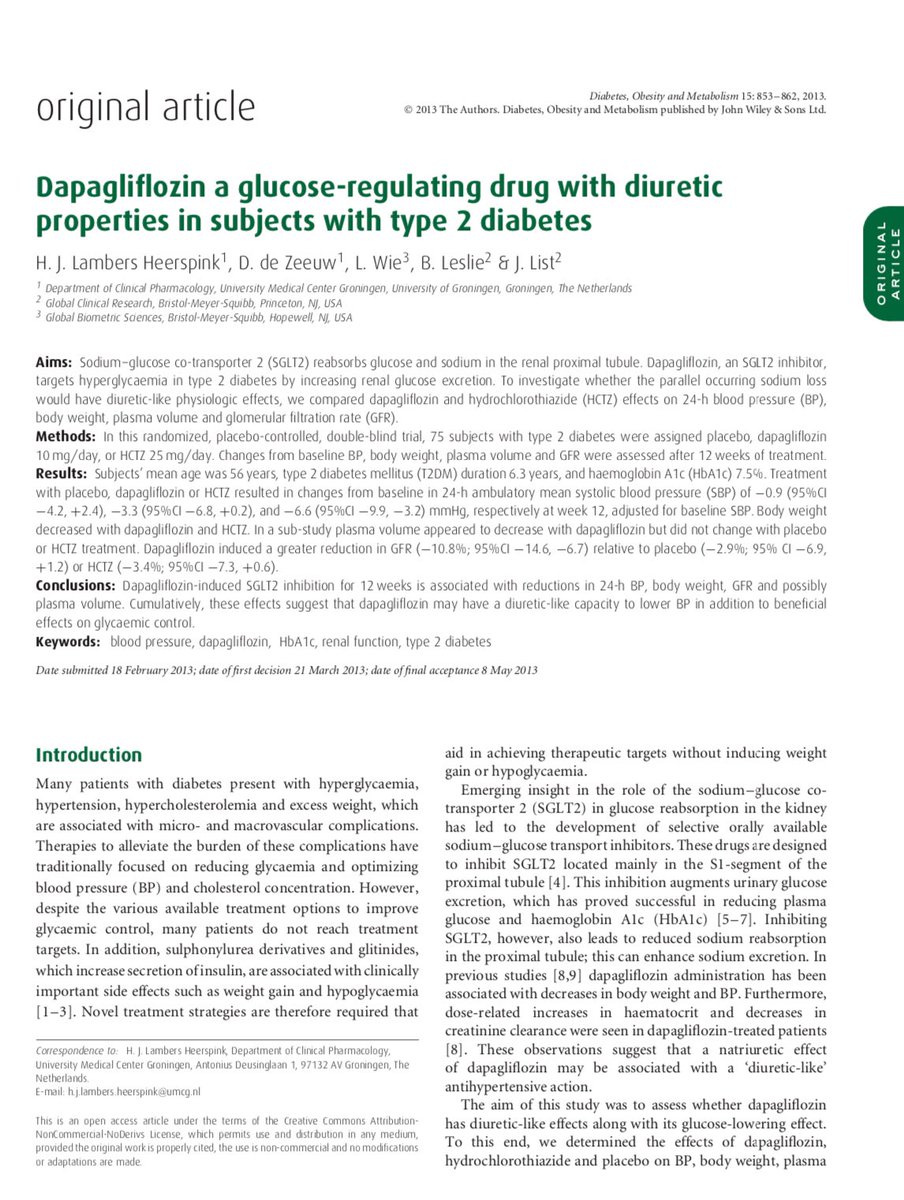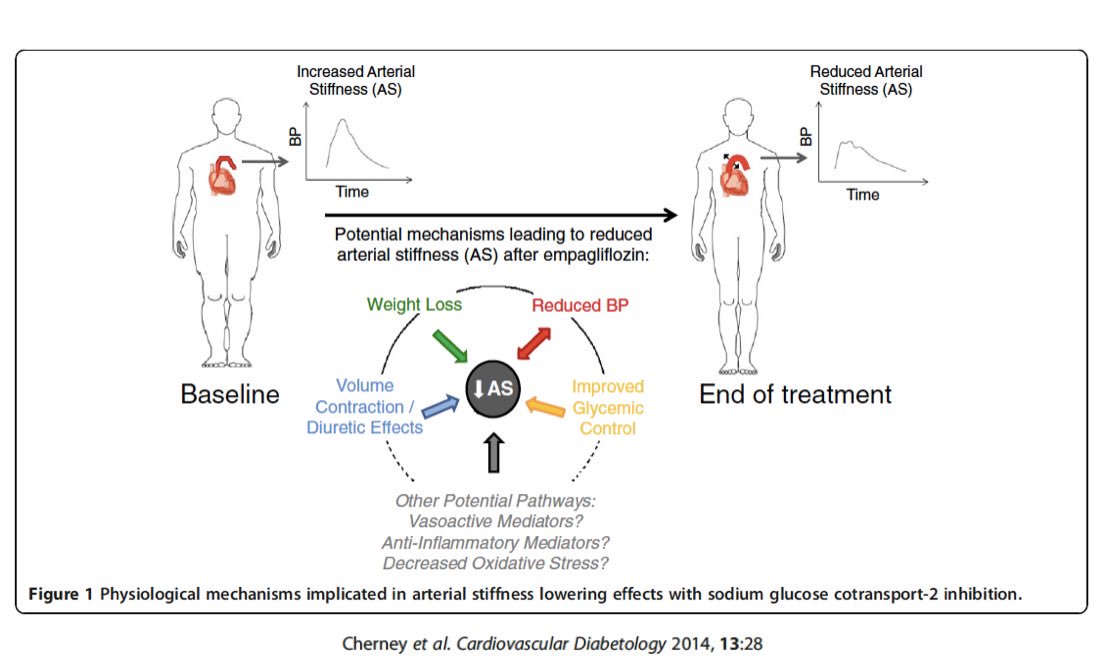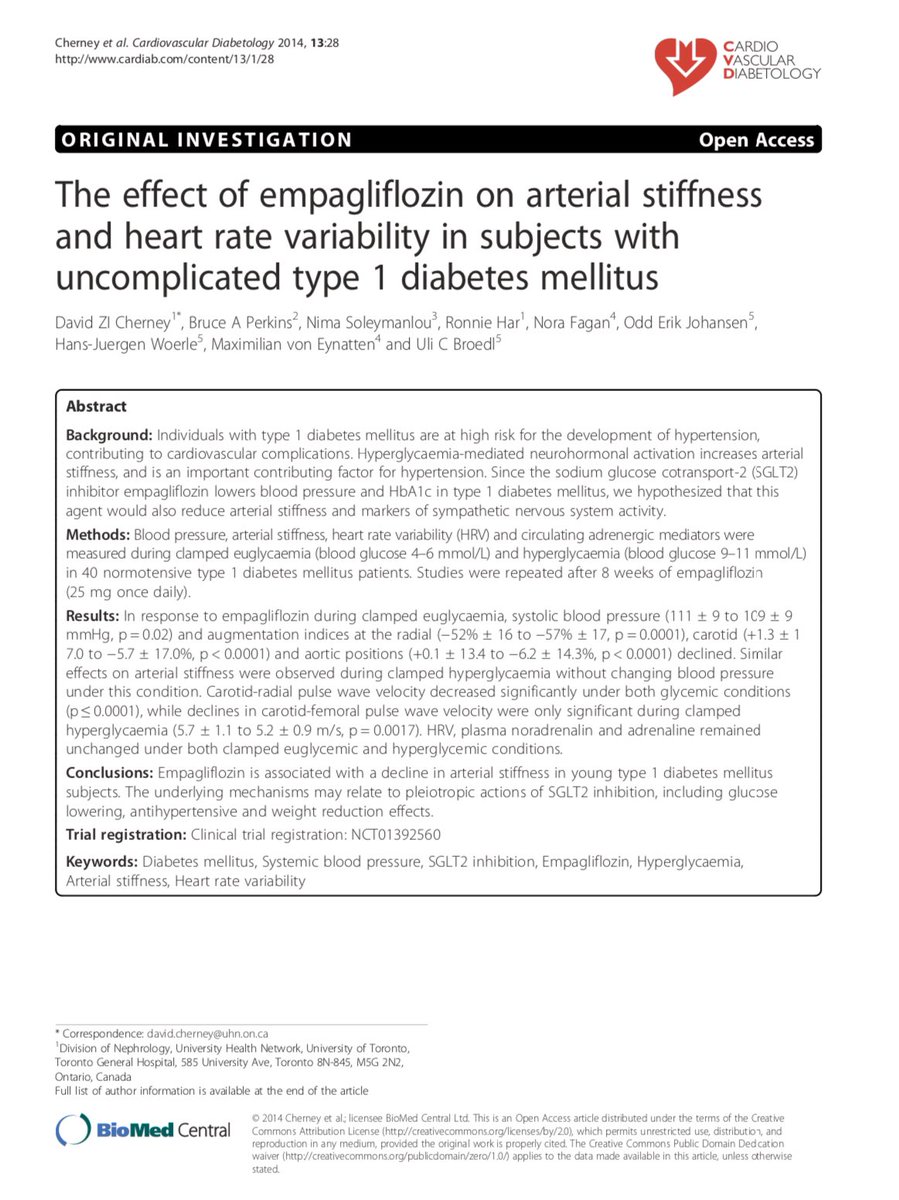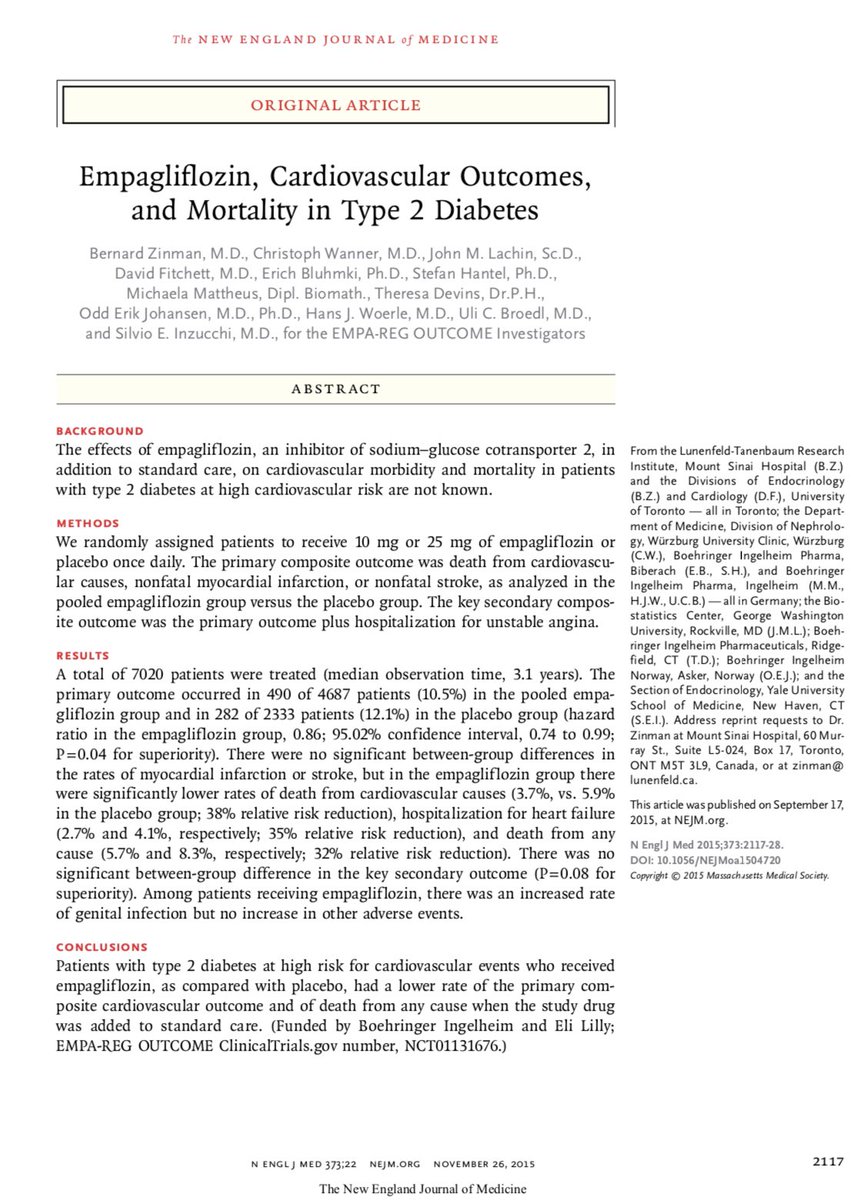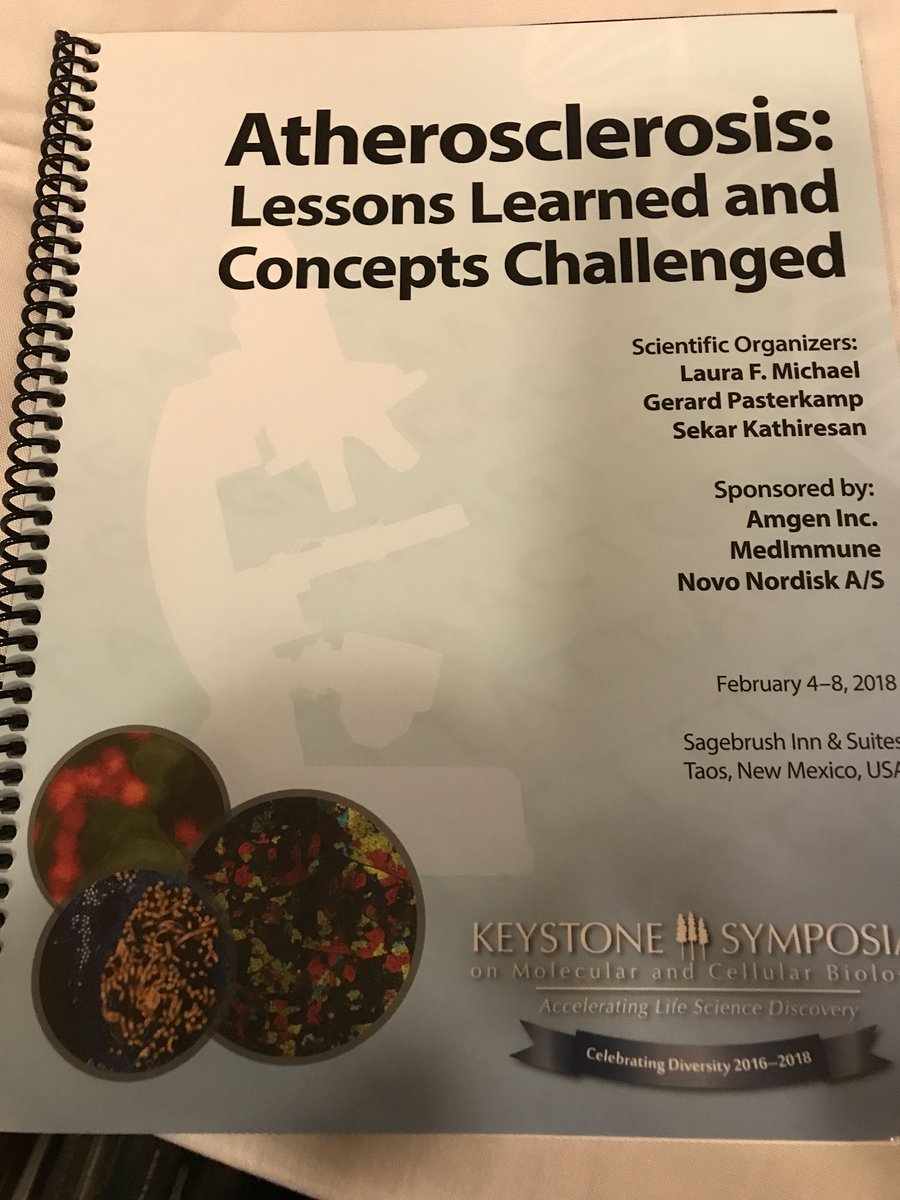💥How does an anti-diabetic drug improve Renal & Cardiovascular outcomes?
💥To understand this let’s first review:
⚡️Renal handling of glucose
1/
@RenalFellowNtwk
#NephJC
#SGLT2
#CREDENCE
⚡️180 g of glucose is filtered thru the glomeruli every day
(180 L x 100mg/dL)
⚡️But all the glucose is completely reabsorbed
⚡️Renal reabsorption of glucose occurs thru transporters in the proximal tubule called SGLT
2/
Their action is:
⚡️dependent on blood glucose level
⚡️independent of insulin hence there is ⬇️ risk of hypoglycemia
7/
⚡️Are they Anti-diabetic agents?
⚡️Are they diuretics?
⚡️Do they cause weight loss?
⚡️Are they Anti-HTN agents?
⚡️Do they lower intra-glomerular pressure?
10/
13/
⚡️Wt. loss seen earlier with it’s use is likely due to osmotic diuresis
⚡️Wt. loss seen later is likely from ⬇️ in body fat due to calories lost due to glucosuria (~300 kcal/d)
16/
⚡️⬇️ systolic BP by 3-4 mm & diastolic BP by 1-2 mm
⚡️Due to diuretic effect, wt. loss, ⬇️ arterial stiffness ⬇️ SNS activation
⚡️👆🏽 may explain why the anti-HTN effect persists even at lower GFR
17/
⚡️Likely not - as the reduction in A1C is modest & other diabetic drugs w/ similar A1C affect have not shown similar Renal & CV outcomes (exception: GLP-1RA)
19/
⚡️Genital infections
⚡️DKA
⚡️Volume depletion/AKI
⚡️? Amputations (not seen in the #CREDENCE Trial)
21/
⚡️Rx of T2DM - add on to metformin if A1C ⬆️
⚡️ T2DM + CV disease
⚡️FDA currently does not approve it’s use at GFR <45 ml’s/min but..
22/
23/

